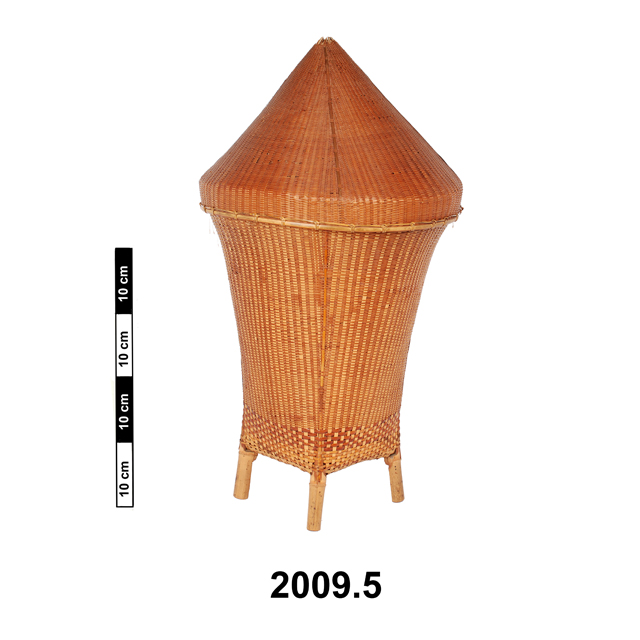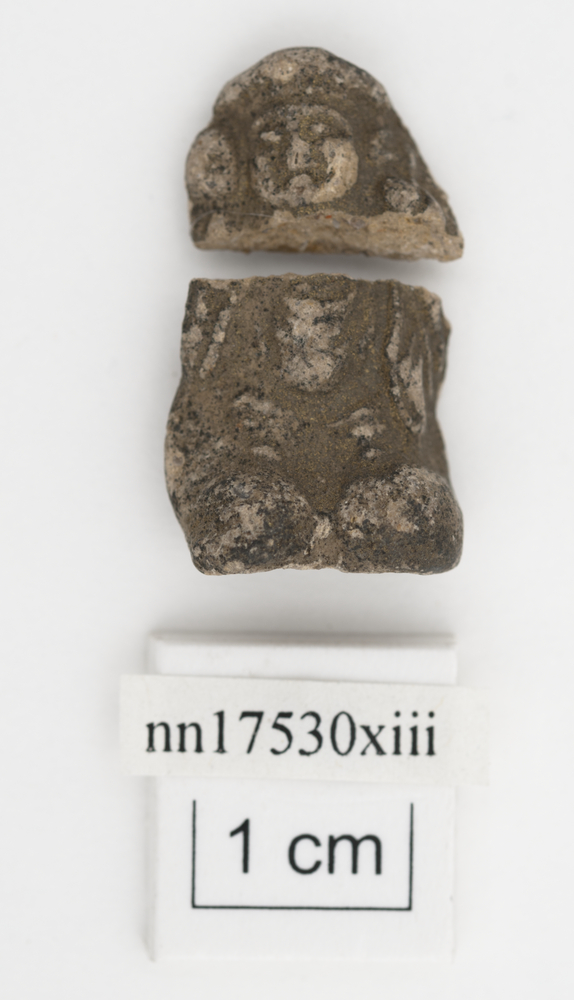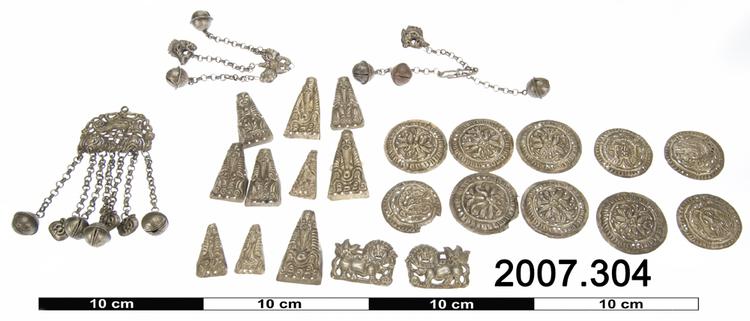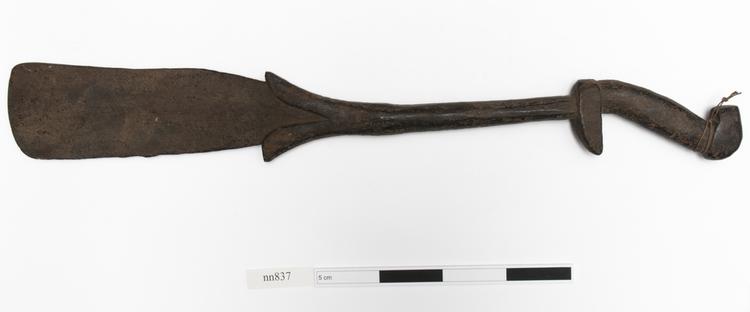
Storage basket on legs with cone shaped lid. The basket is formed of a double layer of basketry, the outer layer formed of strips of bamboo woven at the base and partway up the side in checkerwork, the base being square in form. Part way up the sides the horizontal strands are much narrower than the vertical ones. For the inner skin of the baskey, the base is woven in a twill weave, the strips of bamboo continuing up the sides of the basket but here passing over the horizontal strips at more widely spaced intervals, generally over four and under one. Four strips below the rim the sides turn slightly inwards. At this point the basket is lashed all round with vegetal fibre. At the top is a band of thicker bamboo bound to the body of the basket at regular intervals. The lid is also formed of two layers, but here the inner layer is made of leaves held in place by widely spaced strips of bamboo, some of which rise from the circumference of the lid to its peak and end there, others crossing the lid from one side of the circumference to the other, weaving in and out of the vertical strips, thus forming a pattern chiefly of triangles and hexagons. From the rim of the lid the struts rise vertically for a couple of inches, at which point it is lashed all round, then turn inwards to the peak. This bottom section has five rows of horizontal bamboo strips close together interwoven with the vertical strips. The outer layer is surrounded at the rim by a band of bamboo bound at intervals to the body of the lid. From here the basketwork rises with much narrower narrower strips woven over and under the wider vertical strips. The basket has suffered damage at the peak and the tips of the vertical strips are missing. The lid is divided into quarters by four narrow vertical strips bound to the outside of the lid.






